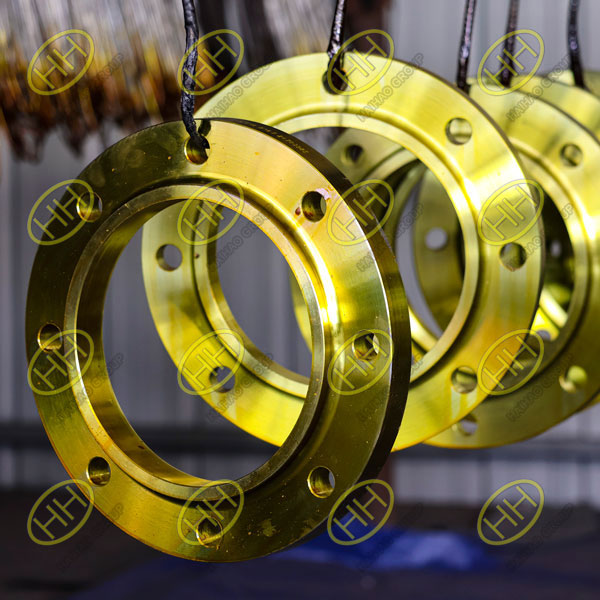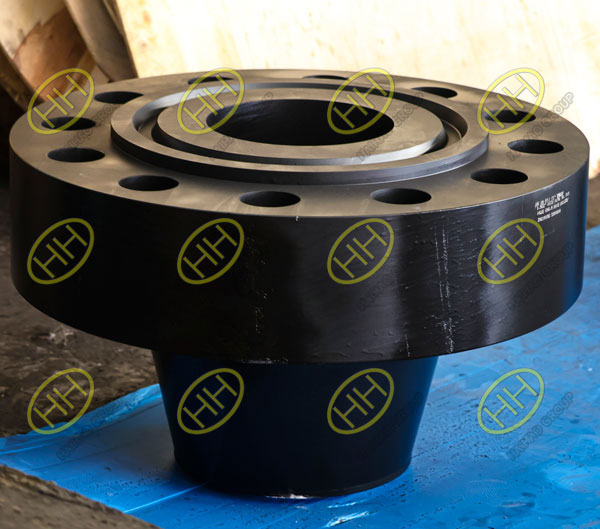The difference between RF and RTJ sealing faces
In the realm of piping systems and flange connections, understanding the various sealing face types is crucial for ensuring leak-proof and efficient operations. Two common types of sealing faces are Raised Face (RF) and Ring Type Joint (RTJ). Each type has distinct characteristics and applications, making them suitable for different situations in industrial piping systems. This article will delve into the differences between RF and RTJ sealing faces to help you make informed decisions for your projects.
Raised Face (RF) Sealing Face
The RF sealing face is characterized by a raised portion around the flange’s circumference. This design allows for improved sealing capabilities, as the raised area increases the contact surface between the flange and the gasket. RF sealing faces are commonly found in standard flanges and are used in various applications, including:
RF sealing surface flange
Common Applications: RF sealing faces are widely used in low to moderate pressure and temperature environments. They are ideal for applications in the oil and gas industry, water treatment facilities, and chemical processing plants.
Gasket Compatibility: RF sealing faces are compatible with a variety of gasket materials, including rubber, PTFE, and metal. The gasket fills the gap between the raised face and the counter surface, providing a reliable seal.
Installation: RF sealing faces are easier to install and align, making them a popular choice for standard applications.
Ring Type Joint (RTJ) Sealing Face
The RTJ sealing face, on the other hand, features a specially designed groove that accommodates a metal ring gasket. This type of sealing face is primarily used in high-pressure and high-temperature applications. Key attributes of RTJ sealing faces include:
High-Pressure Capability: RTJ sealing faces are specifically designed to handle extreme pressure and temperature conditions. They are commonly utilized in critical applications such as oil and gas exploration, power generation, and petrochemical industries.
Gasket Design: The metal ring gasket used with RTJ sealing faces is shaped to fit snugly into the groove, creating a tight seal under pressure. This design minimizes the risk of leaks and ensures durability.
Complex Installation: While RTJ sealing faces provide exceptional sealing capabilities, they require precise alignment and installation techniques. The complexity of the installation process can be a consideration in project planning.
RTJ sealing surface flange
Key Differences
Design: RF sealing faces have a raised surface, while RTJ sealing faces feature a groove designed for a metal ring gasket.
Pressure Ratings: RF sealing faces are typically used for lower pressure applications, while RTJ sealing faces are designed for high-pressure and high-temperature conditions.
Gasket Compatibility: RF sealing faces can use various gasket materials, whereas RTJ sealing faces specifically require metal ring gaskets.
Installation: RF sealing faces are generally easier to install, while RTJ sealing faces demand more precise installation and alignment.
Both RF and RTJ sealing faces have their unique advantages and are suited for different applications. When selecting between the two, it is essential to consider the specific requirements of your project, including pressure ratings, temperature conditions, and gasket compatibility. Understanding these differences can help ensure the integrity and reliability of your piping systems, ultimately leading to safer and more efficient operations. If you have any questions or need further assistance with your piping needs, feel free to reach out to our expert team at Haihao Group.



